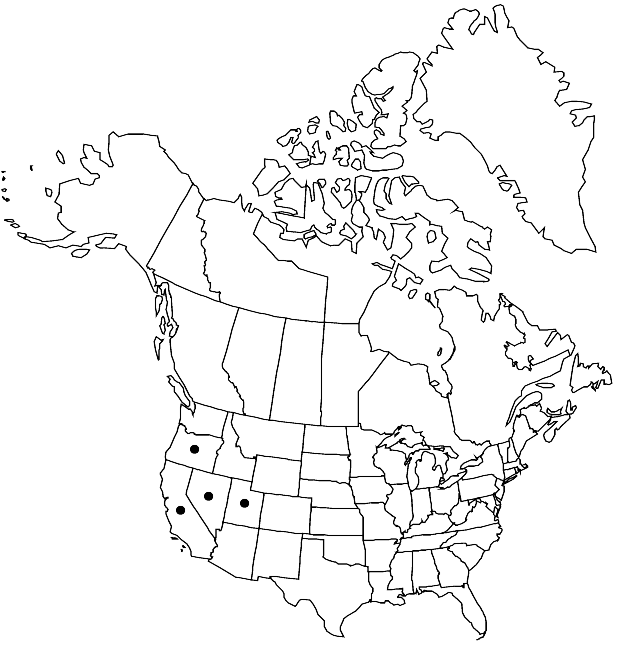Caulanthus major
Ann. Missouri Bot. Gard. 9: 291. 1923.
Perennials; glabrous (or petioles and sepals pubescent). Stems erect or ascending, unbranched or branched distally, (hollow, sometimes slightly inflated), 2–10 dm. Basal leaves rosulate; petiole 0.5–9 cm; blade obovate to oblanceolate or elliptic (in outline), 1–14 cm × 5–25 mm, margins entire, dentate-sinuate, lyrate, or pinnatifid-runcinate. Cauline leaves (distalmost) shortly petiolate; blade linear to narrowly oblanceolate, margins entire. Racemes (densely flowered), without a terminal cluster of sterile flowers. Fruiting pedicels ascending, 1–6 mm. Flowers: sepals erect, (creamy white or purple), ovate to lanceolate, 6.5–9.5 × 2.7–4 mm, (equal, pubescent); petals purple, 11–17 mm, blade 4–7 × 1–1.7 mm, not or hardly crisped, claw oblanceolate, 7–13 × 2.5–3.5 mm; filaments tetradynamous, median pairs 5–7 mm, lateral pair 4–6 mm; anthers narrowly oblong, equal, 4–6 mm. Fruits erect to ascending, terete or slightly latiseptate, 4.5–12 cm × 2.2–2.8 mm; valves each with obscure midvein; ovules 46–58 per ovary; style obsolete or, rarely, to 0.4 mm; stigma slightly 2-lobed (lobes opposite valves). Seeds 2–3.5 × 1.3–1.8 mm. 2n = 28.
Phenology: Flowering May–Aug.
Habitat: Margin of montane forests, sagebrush, pinyon-juniper woodland
Elevation: 1500-3200 m
Distribution

Calif., Nev., Oreg., Utah.
Discussion
Caulanthus major is found in eastern and southern California, Nevada, southeastern Oregon, and Utah.
Selected References
None.
Lower Taxa
"elongated" is not a number."thick" is not a number."dm" is not declared as a valid unit of measurement for this property.